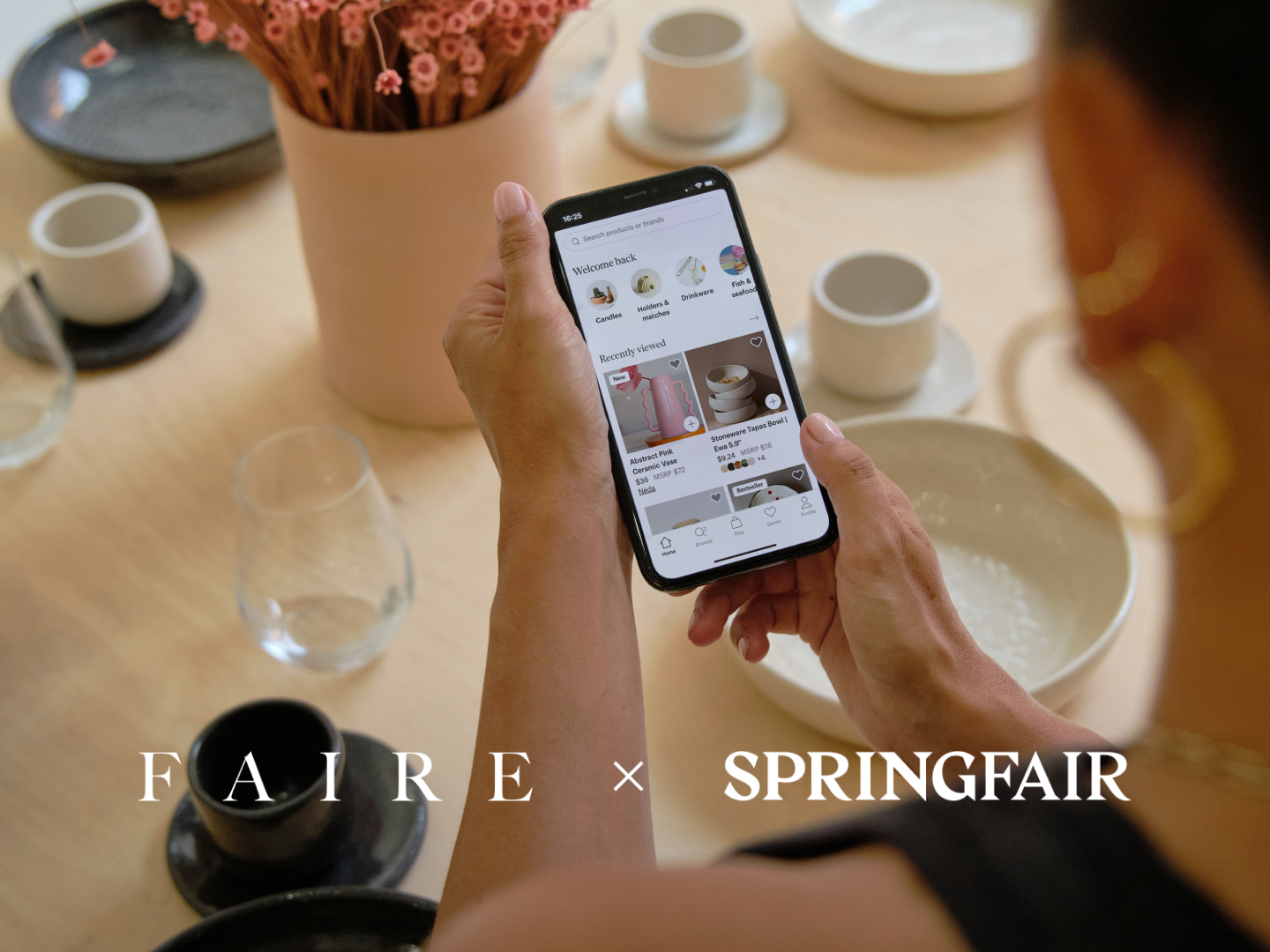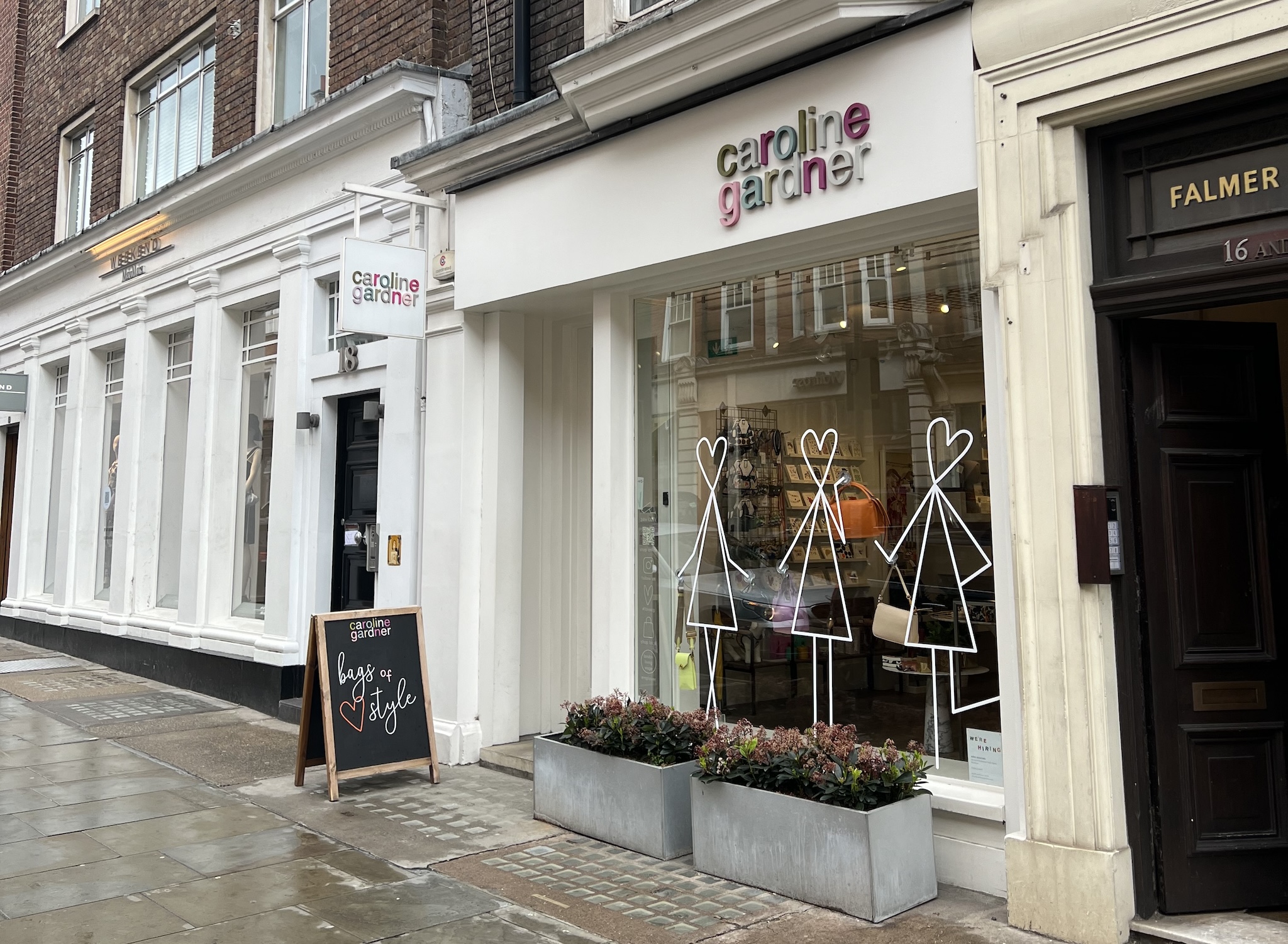

Starting a brand is an amazing feat. You’re likely juggling an e-commerce website, wholesale operations, marketing, supply chains, logistics and so much more. The thought of adding a retail operation to that mix? It sounds like a lot, but for many brands, retail can offer both a new sales avenue and a way to build relationships with local customers and the community.
We spoke with Kyra White, the head of marketing at Caroline Gardner, to find out more about how the colourful lifestyle and gifting company balances the brand side with the retail- operation side – and how you can too.
The business started 30 years ago as “a single collection of greeting cards in 1993” and has now grown into a lifestyle and gifting brand with a thriving wholesale and retail arm, as well as a flagship store on Marylebone High Street in London. “A lot has changed in the world in that time, and we have strived to be at the forefront of that while remaining true to our values”, says Kyra. “Above all, I think the customer has been at the forefront of everything throughout that 30 years”.
While three decades of brand and retail lessons hardly fit into a single blog post, Kyra kindly shares her top tips for creating a cohesive brand identity, integrating sustainability and establishing (and maintaining!) a successful retail operation. Read on to find out the lessons Caroline Gardner has learned along the way.
The benefits of a physical retail presence
Having a physical space to call its own has really changed things for Caroline Gardner. Being stocked in some huge UK retailers, like John Lewis, means the brand gets a “zone” to play with, but having its own store gives the team so much freedom. “It’s literally our world in there.”
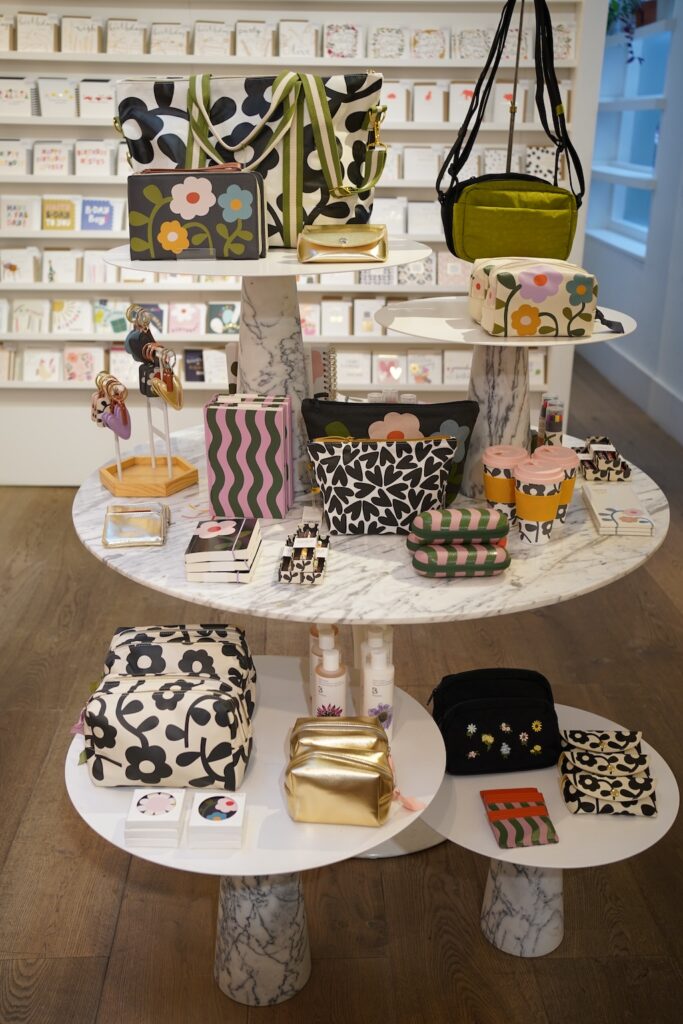
One of the main benefits of a physical shop is the chance to engage with the community and get real-time, honest feedback. Community engagement is crucial to Caroline Gardner’s strategy because it builds trust and loyalty.
“Happy and satisfied community members are our unofficial brand ambassadors”, says Kyra. “Having face time and real time with customers allows us to hear firsthand what they think. They’re very honest”. Speaking directly to customers can help you understand their needs, preferences and opinions, which, in turn, can help shape your future design decisions. And, as well as seeing customers react to your products, you can find out how long they spend in-store.
Caroline Gardner is a brand that likes to give back, so a physical space also provides the opportunity to run events, like candle painting, to build emotional connections with customers beyond the products.
Another benefit of having your own space is that it opens up more possibilities for marketing because you have a built-in showroom for experimenting. Kyra says the flagship store is “the most inspiring place for all our products to gather”. As well as allowing customers to physically see how products look against each other (rather than scrolling through flat images on a screen), Kyra’s team also has somewhere to record social media content and have press days and host influencers.
Sourcing the right products
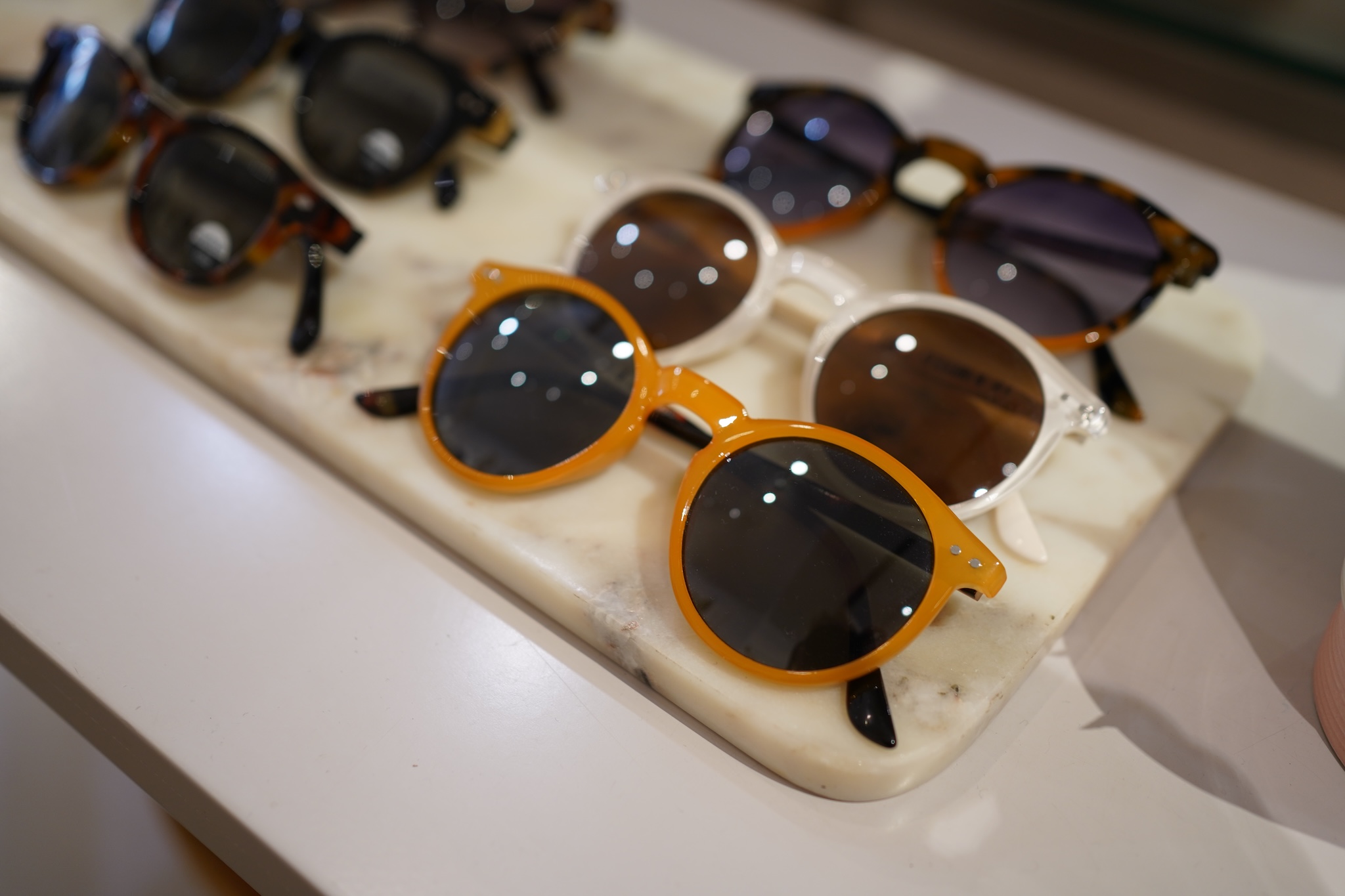
Caroline Gardner predominantly stocks its own products, so bringing in other brands is “the cherry on the cake”. When the brand does source new products to go alongside its own, Kyra says they keep an eye out for complementary products like:
- Really buttery, soft leather bags from Italy.
- Fashion accessories, like jewellery, hair accessories and sunglasses.
- The right candles to go in their candlestick holders.
As well as prioritising quality products that last and offer value for money, Kyra says, “We really want to partner with brands who are as passionate about colour, pattern and detail as we are”.
Creating a cohesive brand identity
Staying consistent across physical and online platforms is important, so how does Caroline Gardner do it? “Caroline herself is very much involved in all visual elements, from the colours we use in products to the typography in our cards. And she never wants to compromise on quality”, Kyra says. “She works really, really closely with the talented design team here to ensure that wherever you see Caroline Gardner, it looks the same”.
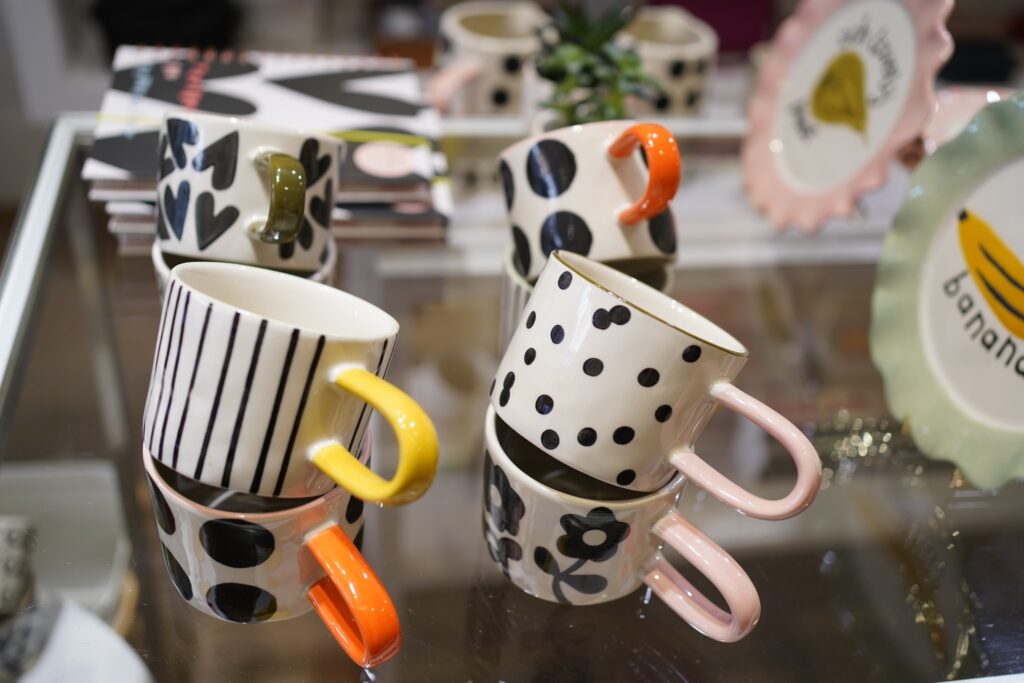
Kyra also says it really helps to have clear brand guidelines and values that everyone can follow. “They’re pretty much our checklist. All departments have them – from social media to the shop team – so everyone’s singing off the same hymn sheet”.
Integrating sustainability
Sustainability has always been at the heart of Caroline Gardner. Case in point: It was one of the very first card brands to do away with plastic packaging. But this ethos carries over to its retail side too. Kyra says they’re currently working towards becoming a B Corp company: “We’re on our sustainability journey in all aspects of the business, from head office to the factories that we work with”. She also says it’s important to look at how you’re doing things currently and find out if there are more sustainable methods you can use.
As well as having someone on the team overseeing the changes, the close-knit nature of the brand means “any new initiatives can be shared and implemented immediately”. And although they’re relying on the suppliers and factories for some changes, the team focuses on what they can do to make a difference. “Internally, we definitely feel, as individuals, that we’ve got a responsibility”, says Kyra. “We’re always thinking of ways to help our planet and be more sustainable”. For example, the team takes work days and turns them into “charity days”, helping whichever charity they choose. As a giving brand, Kyra says they focus on giving “in every possible way we can”.
6 top tips for establishing (and maintaining!) a successful retail operation
We asked Kyra to share some advice about successfully adding a retail side to your business:
- Be confident with your product offering: You need to be proud of your products because that’ll be reflected in everything you do.
- Be smart with your margins and listen to customers: Your customers are ready and waiting to help you improve your products with their firsthand experiences, so make sure you listen to them!
- Be innovative: Think about what differentiates your space from other retailers in the area. “Nobody wants another shop that’s the same as all the rest. Create a reason for customers to visit”.
- Make room for new stock: It’s important to be on top of things so you don’t get weighed down by slow-selling stock! For example, look out for items available in multiple colours and mark down the ones selling more slowly. “Our guys will literally go, ‘The yellow’s been so much lower than the green. We need to mark it down’. There’s no point sitting on stock that’s just taking up room for something that could sell”.
- Have a good relationship with the people working in the shop: You’re all part of one team, whether you’re working in the head office or on the shop floor. “The team in the shop are your spokespeople and the frontline of your customer service. Having the right people in there who are passionate about the product and brand is definitely important in a retail space”, Kyra says. It’s important to get the team involved so they “feel empowered” and don’t feel like they’re working for someone. “Let them run it and do their thing, basically”.
- Be reactive: Whether you’re focusing on sustainability initiatives or updating the shop window, make sure you’re always on the ball and ready for new ideas. “We change the shop window every two to three weeks. If it starts raining, we put umbrellas in the window and people will run in for umbrellas”.
The team in the shop are your spokespeople and the frontline of your customer service.
Kyra White, head of marketing, Caroline Gardner
Trialling products so they’re ready for wholesale
Kyra says the team is “always innovating our products” and having a physical site helps them get the products (such as the new nightwear collection) “exactly right” before pushing them elsewhere.
“Once we’ve tested and perfected it, we hope to then evolve that to the wholesale side. Hopefully, you’ll be seeing that on Faire”.



